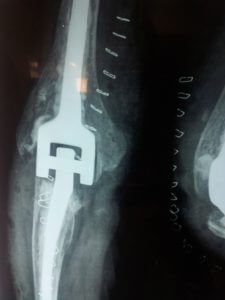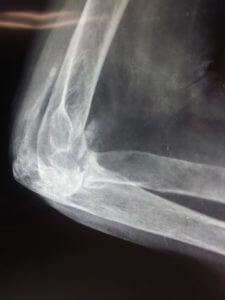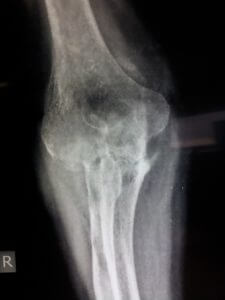Elbow Arthroplasty
Elbow Arthroplasty
Elbow Arthroplasty ( Replacement) is a very rewarding procedure in indicated patients. It is commonly performed in complex communited fractures in elderly low demand individual. It is also quite useful in Elbow damaged due to Rheumatoid arthritis. This gives very good pain relief and improves functional results.






FAQs related to Elbow Arthroplasty
How long is recovery from elbow arthroplasty?
Recovery from elbow arthroplasty, a surgical procedure to replace a damaged or diseased elbow joint with an artificial joint, can vary depending on several factors. Generally, the initial recovery period after surgery is around six to eight weeks. During this time, patients may experience pain, swelling, and stiffness in the elbow joint. Physical therapy is an essential component of the recovery process, aiming to restore range of motion, strength, and function in the arm. However, it is important to note that complete recovery and return to normal activities may take several months. The rehabilitation process typically continues for three to six months, involving regular therapy sessions and home exercises to gradually regain strength and mobility. The patient’s commitment to following the rehabilitation plan, their overall health, and the complexity of the surgery can influence the duration of recovery.
What is total elbow arthroplasty treatment?
Total elbow arthroplasty is a surgery that replaces a damaged elbow joint with an artificial one. It is performed to relieve pain and restore function in people with severe elbow arthritis or injuries. During the procedure, damaged bone and cartilage are removed and replaced with artificial components, including a metal stem, a metal and plastic hinge, and a metal cap. Total elbow arthroplasty requires careful planning and skilled surgery, and patients undergo rehabilitation afterward. While it can provide pain relief and improved function, potential risks and complications should be considered. Consulting with an orthopedic surgeon is crucial to determine the suitability of this treatment option.
What position is elbow arthroplasty?
Elbow arthroplasty is a surgery to replace a damaged elbow joint with an artificial one. It is a last resort when non-surgical treatments fail. It is commonly done for severe arthritis, fractures, or chronic conditions like rheumatoid arthritis. The procedure involves removing damaged parts and replacing them with metal and plastic components. This improves mobility, reduces pain, and restores elbow function. There are different types of elbow arthroplasty, depending on the patient’s condition. Recovery involves immobilization and physical therapy. Complications can occur, such as infection, prosthesis loosening, and nerve damage.
What is the most common diagnosis treated with elbow arthroplasty?
Elbow arthroplasty is a common surgical procedure for treating elbow joint conditions like arthritis, fractures, and degenerative diseases. Arthritis, including rheumatoid arthritis and osteoarthritis, is the primary reason for undergoing elbow arthroplasty. Rheumatoid arthritis is an autoimmune disease causing chronic joint inflammation and damage, while osteoarthritis is a degenerative joint disease leading to pain, stiffness, and limited mobility. The procedure involves replacing damaged elbow joint parts with artificial components (e.g., metal or plastic implants) to restore joint movement and alleviate symptoms. Elbow arthroplasty has a high success rate in relieving pain and improving function post-surgery, particularly for arthritis-related conditions. It significantly enhances the quality of life for individuals with elbow joint issues.
